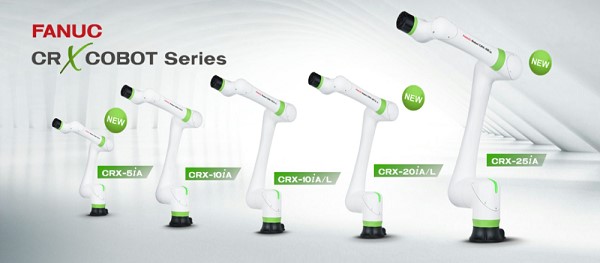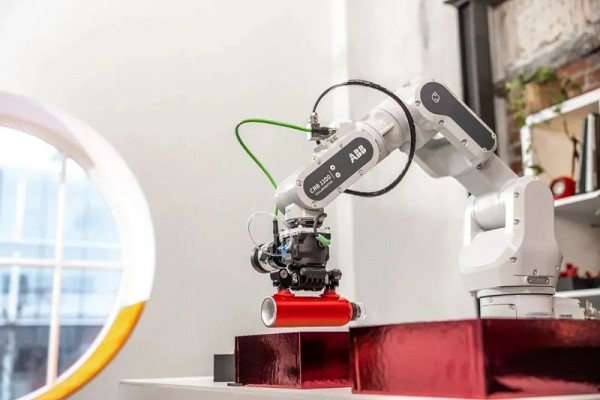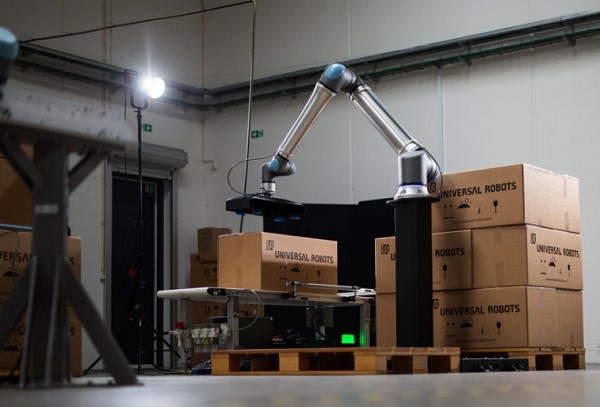What are the differences between ABB, Fanuc and Universal Robots?
1. FANUC ROBOT
The robot lecture hall learned that the proposal of industrial collaborative robots can be traced back to 2015 at the earliest.
In 2015, when the concept of collaborative robots was just emerging, Fanuc, one of the four robot giants, launched a new collaborative robot CR-35iA with a weight of 990 kg and a load of 35 kg, becoming the world's largest collaborative robot at that time. CR-35iA has a radius of up to 1.813 meters, which can work in the same space with humans without safety fence isolation, which not only has the characteristics of safety and flexibility of collaborative robots, but also prefers industrial robots with large loads in terms of load, realizing the surpassing of collaborative robots. Although there is still a big gap between body size and self-weight convenience and collaborative robots, this can be regarded as Fanuc's early exploration in industrial collaborative robots.

With the transformation and upgrading of the manufacturing industry, the direction of Fanuc's exploration of industrial collaborative robots has gradually become clear. While increasing the load of collaborative robots, Fanuc also noticed the weakness of collaborative robots in convenient working speed and convenient size advantages, so at the end of 2019 Japan International Robot Exhibition, Fanuc first launched a new collaborative robot CRX-10iA with high safety, high reliability and convenient use, its maximum load is up to 10 kg, working radius 1.249 meters (its long-arm model CRX-10iA/L, The action can reach a radius of 1.418 meters), and the maximum movement speed reaches 1 meter per second.
This product was subsequently expanded and upgraded to become Fanuc's CRX collaborative robot series in 2022, with a maximum load of 5-25 kg and a radius of 0.994-1.889 meters, which can be used in assembly, gluing, inspection, welding, palletizing, packaging, machine tool loading and unloading and other application scenarios. At this point, it can be seen that FANUC has a clear direction to upgrade the load and working range of collaborative robots, but has not yet mentioned the concept of industrial collaborative robots.
Until the end of 2022, Fanuc launched the CRX series, calling it an "industrial" collaborative robot, aiming to seize new opportunities for the transformation and upgrading of the manufacturing industry. Focusing on the two product characteristics of collaborative robots in safety and ease of use, Fanuc has launched a full series of CRX "industrial" collaborative robots with the four characteristics of stability, accuracy, ease and province by improving the stability and reliability of products, which can be applied to small parts handling, assembly and other application scenarios, which can not only meet the needs of industrial users for collaborative robots with higher requirements for space, safety and flexibility, but also provide other customers with a high-reliability collaborative robot product.
2. ABB ROBOT
In February this year, ABB grandly released the new SWIFTI™ CRB 1300 industrial-grade collaborative robot, ABB's action, many people believe that it will have a direct impact on the collaborative robot industry. But in fact, as early as the beginning of 2021, ABB's collaborative robot product line added a new industrial collaborative robot, and launched the SWIFTI™ with a running speed of 5 meters per second, a load of 4 kilograms, and fast and accurate.
At that time, ABB believed that its concept of industrial collaborative robots combined the safety performance, ease of use and speed, precision and stability of industrial robots, and was intended to bridge the gap between collaborative robots and industrial robots.
This technical logic determines that ABB's industrial collaborative robot CRB 1100 SWIFTI is developed on the basis of its well-known industrial robot IRB 1100 industrial robot, CRB 1100 SWIFTI robot load of 4 kg, maximum working range up to 580 mm, simple and safe operation, mainly to support manufacturing, logistics and other fields of application scenarios to improve production efficiency, while helping more enterprises to achieve automation. Zhang Xiaolu, global product manager of ABB's collaborative robots, said: "SWIFTI can achieve faster and safer collaboration with speed and distance monitoring functions, bridging the gap between collaborative robots and industrial robots. But how to make up for it and in which scenarios can be used, ABB has been exploring.
3. UR ROBOT
In the middle of 2022, Universal Robots, the originator of collaborative robots, launched the first industrial collaborative robot product UR20 for the next generation, officially proposing and promoting the concept of industrial collaborative robots, and Universal Robots revealed the idea of launching a new generation of industrial collaborative robot series, which quickly caused heated discussions in the industry.
According to the robot lecture hall, the highlights of the new UR20 launched by Universal Robots can be roughly summarized into three points: the payload of up to 20 kg to achieve a new breakthrough in Universal Robots, the reduction of the number of joint parts by 50%, the complexity of collaborative robots, the improvement of joint speed and joint torque, and the improvement of performance. Compared with other UR collaborative robot products, the UR20 adopts a new design, achieving a payload of 20 kg, a body weight of 64 kg, a reach of 1.750 meters, and a repeatability of ± 0.05 mm, achieving breakthrough innovation in many aspects such as load capacity and working range.
Since then, Universal Robots has set the tone for the development of industrial collaborative robots with small size, low weight, high load, large working range and high positioning accuracy.
Post time: May-31-2023


